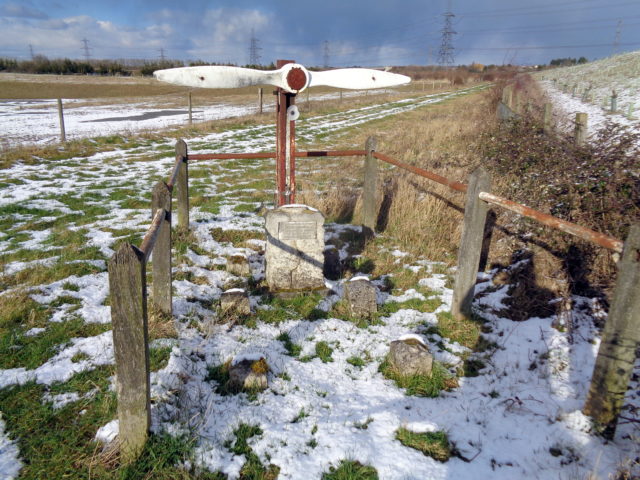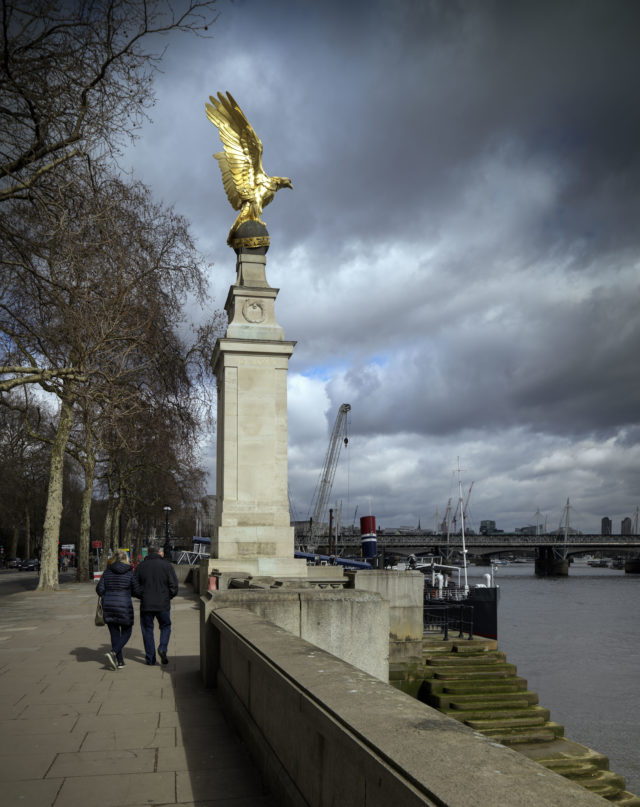Airmen memorials given protected status to mark RAF centenary
Moves to list or upgrade protection for 14 memorials marks 100 years since the formation of the world’s first independent air force.

Memorials dedicated to airmen in the First and Second World Wars have been given heritage protection to mark the centenary of the Royal Air Force.
Some 14 war memorials, including one to the most decorated British pilot of the First World War and one to the first pilot to shoot down a German zeppelin airship, have been newly listed or had their protected status upgraded.
Unusual aviation monuments with new listings include a memorial with a central figure of Zeus, god of thunder; a Calvary Cross with a figure of Christ crucified, and a memorial in the shape of an aircraft.

The RAF was formed on April 1, 1918, following a merger of the Royal Flying Corps and the Royal Naval Air Service, which each had around 100 aircraft, balloons and airships at the beginning of the First World War in 1914.
By the end of the four-year conflict, the first in which aviation played a major role, the RAF had 27,000 officers and 260,000 other personnel operating more than 22,000 aircraft, but had seen high casualty rates.
The RAF played a key role in the Second World War, including fighting the German Luftwaffe in the Battle of Britain which prompted the tribute by Winston Churchill that “never in the field of human conflict was so much owed by so many to so few”.

“As we mark its centenary, it is right that we remember the stories of the brave pilots and staff who served in defence of Britain.
“These listings commemorate this legacy and preserve these historic memorials for future generations.”
Duncan Wilson, chief executive of Historic England said: “The listing and upgrading of these war memorials dedicated to members of the air services helps to tell the story of Britain’s wartime aviation history and marks the centenary of the formation of the Royal Air Force.
“They commemorate the bravery and sacrifice of Britain’s pilots of both the First and Second World Wars.”

– McCudden War Memorial and Grave in Maidstone Road Cemetery, Chatham, Kent, which is dedicated to the four McCudden brothers, including James who shot down 57 enemy aircraft and became the most decorated British pilot of the First World War – listed at Grade II;
– Leefe Robinson Memorial Obelisk, Potters Bar, Hertfordshire, dedicated to
Captain Leefe Robinson, a Royal Flying Corps pilot, who achieved the first successful destruction of a Zeppelin over Britain – listed at Grade II;
– Captain Eric Lubbock’s Memorial, High Elms Country Park, London Borough of Bromley, commissioned by his grieving mother, Lady Avebury, who asked that the memorial take the form of an aircraft – listed at Grade II;
– Two memorials, to Captain Alexander Bruce Kynoch and Captain Henry Clifford Stroud, Dollymans Farm, Rawreth, Essex, who collided in bad weather trying to intercept a German bomber heading for London and crashed in adjacent fields where the memorials with propellers on the plinths stand – listed at Grade II;
– Catterick Camp and Aerodrome War Memorial, High Street, Catterick, Richmond, North Yorkshire, a Calvary Cross featuring Christ being crucified honours the officers and men from both the army camp to the west of the village and the RFC Catterick airfield to the south – listed at Grade II;
– St Matthews Oxhey War Memorial, St Matthew’s Church, Oxhey, Hertfordshire, which includes the name of Reginald Alexander John Warneford who was noted for his skill and aggression in the air – listed at Grade II;
– Memorial Obelisk for Captain Hamilton and Lieutenant Wyness Stuart, Willian, Hertfordshire, two officers of the Royal Flying Corps who died on September 6, 1912 when they crashed during an exercise – listed at Grade II;
– Egton Bridge Cross, North Yorkshire, commemorating the death of Probationary Flying Officer Francis Titcomb from the Royal Naval Air Service, who on 15 April 1917 took off from Redcar Aerodrome for his first solo training flight and crashed after becoming disorientated over the Yorkshire moors – listed at Grade II;
– RAF Wickenby 12 and 626 Squadron War Memorial, Wickenby Airport, Lincolnshire, a Second World War memorial commemorating the 1,080 aircrew of 12 and 626 Bomber Command squadrons who lost their lives in bombing raids on Germany and during the liberation of occupied Europe, and includes a bronze figure based on Icarus – listed at Grade II;
– Aviator’s Memorial, Eastchurch, Kent, with a central figure of Zeus, the god of thunder, and marks the outstanding impact of the Royal Aero Club, based at Eastchurch and Leysdown Flying Grounds, on the development of aviation in Britain – upgraded to Grade II*;
– St Saviour’s War Memorial, Southwark, London, by sculptor Philip Lindsey Clark who was badly wounded in the First World War and intended the memorial to ‘express the same dogged determination and unconquerable spirit displayed by all branches of our forces on land, on the seas, and in the air’ – upgraded to Grade II*;
– Bootle War Memorial, Kings Gardens, Bootle, Merseyside, which is comprised of symbolic life-size bronze figures with a mother and child representing the motherland and future generations of the then British Empire, guarded by the three great fighting forces, army, navy and air force – upgraded to Grade II*;
– Royal Air Force Memorial, Victoria Embankment, London, the national memorial to the RAF, featuring the enormous gilded bronze eagle with wings outstretched that is the symbol of the RAF and its motto: Per ardua ad astra –
through adversity to the stars – upgraded to Grade II*.





